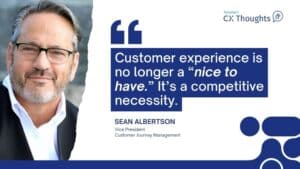
You’ve successfully launched a survey, gathered results and now it’s time to share them with your audience.
I know, reporting research results is supposed to be cut and dried. No emotion, no opinion, just the facts. That might be true for academia and basic research, but in the world of business it’s all about using the results to help us make “good” decisions. Here is a great way to synthesize and summarize your results in a way that will help your audience easily process what the results mean and then make a sound decision based on those results.
How to Present Your Results and Get Recommendations Implemented
- Focus on the Objective as the Burning Issue. In the first thirty seconds of your presentation, remind everyone of what decision you’re trying to make and what the project’s burning issue is. Here’s an example:“Our competitors have already launched Wickety Widget to stellar results, but they are missing out on a key customer segment. Can we interest 1000 soccer moms to buy our Wacky Wodget in the next quarter and take that segment for ourselves?”
- Tell a story. It’s not news anymore that we base many decisions more on an emotional basis than on a logical basis. Since your data is the logic – give your audience and emotional hat to hang your data on. Tell them the story behind the objective of your research. How did this burning issue develop? What observations or opportunities did you identify that prompted the research. What benefits did you think were possible…if only…? Telling a good story will lend context to the data and help your audience formulate an opinion and make decisions. Use your data as supporting evidence to the key points of the story. In other words, instead of using your data and charts to drive the story, use the story to drive the data and the charts.
- Give the Answer in the Chart Title. Charts generally confuse people — especially table charts. That’s why it’s brilliant strategy to give your chart title as a conclusion to what the chart means. For example “85% of our target market prefers the purple flying elephant logo.” This way, when they see the chart, they won’t have to do their own analysis, they will simply confirm what you’ve already told them and this is what will stay in their memory.
- State your recommendation as a solution. Right about this time in the presentation, your audience understands the issue, is wrapped up in the story and sees the data that you’ve presented as supporting the story. The next thing they want to see is what you’re going to do about it. What is the recommendation and the solution? This is where you really have an opportunity to shine.Don’t just present the data, take this golden opportunity to think of creative solutions, recommendations and implementation strategies. Look for creative ways to create mock-ups and other physical representations of solutions. Actually seeing a solution gets people excited and relieves them of the responsibility to think of something. You look like a hero and your recommendation just took another step toward becoming reality.
- Give them a payoff. Tell your audience why this idea is good for them. How will they benefit from implementing these recommendations.
- Tell them how to take action. Come prepared with an action you want them to take. Do they need to approve a budget? Have the paperwork there and ready for their signature. Do they need to get together for another meeting? Have access to a calendar and schedule that date. You’ll never have the audience this excited again, so take advantage of it.
This outline will take a little longer to prepare than your standard Power Point presentation, but it will only take about ten minutes to deliver and will get your audience saying “YES” to your recommendations.
Try it and let us know how it worked.
About the Author: Ivana Taylor is CEO of Third Force, a strategic firm that helps small businesses get and keep their ideal customer. She’s the co-author of the book “Excel for Marketing Managers” and proprietor of DIYMarketers, a site for in-house marketers. Her blog is Strategy Stew. You can reach her directly at [email protected].







